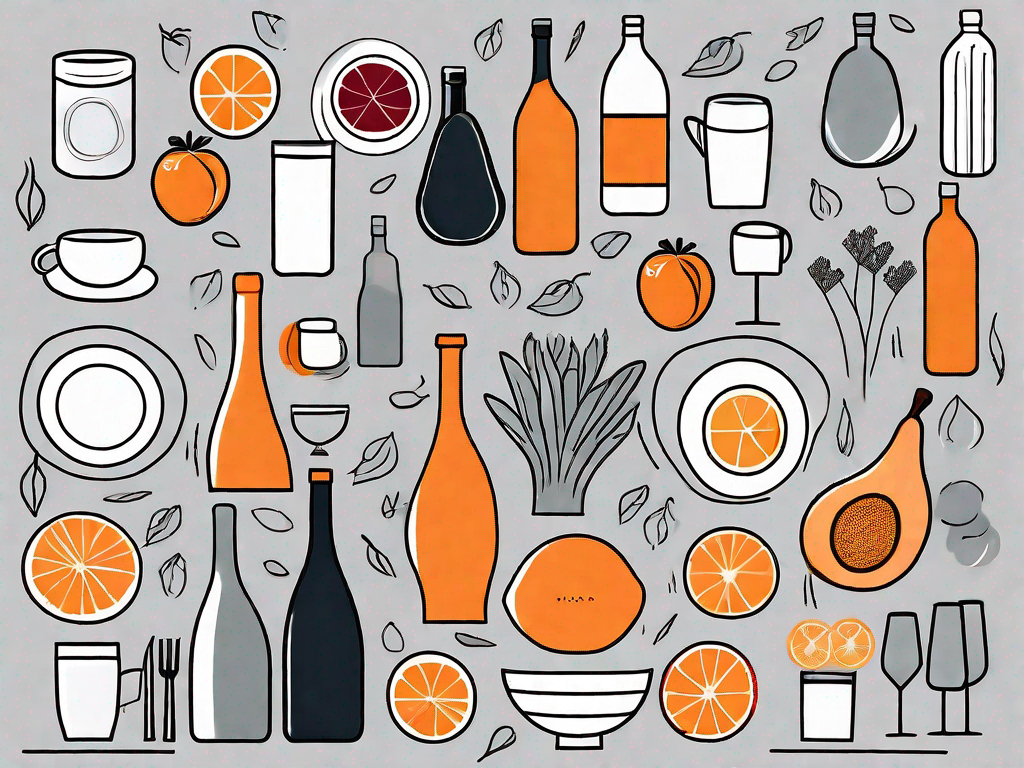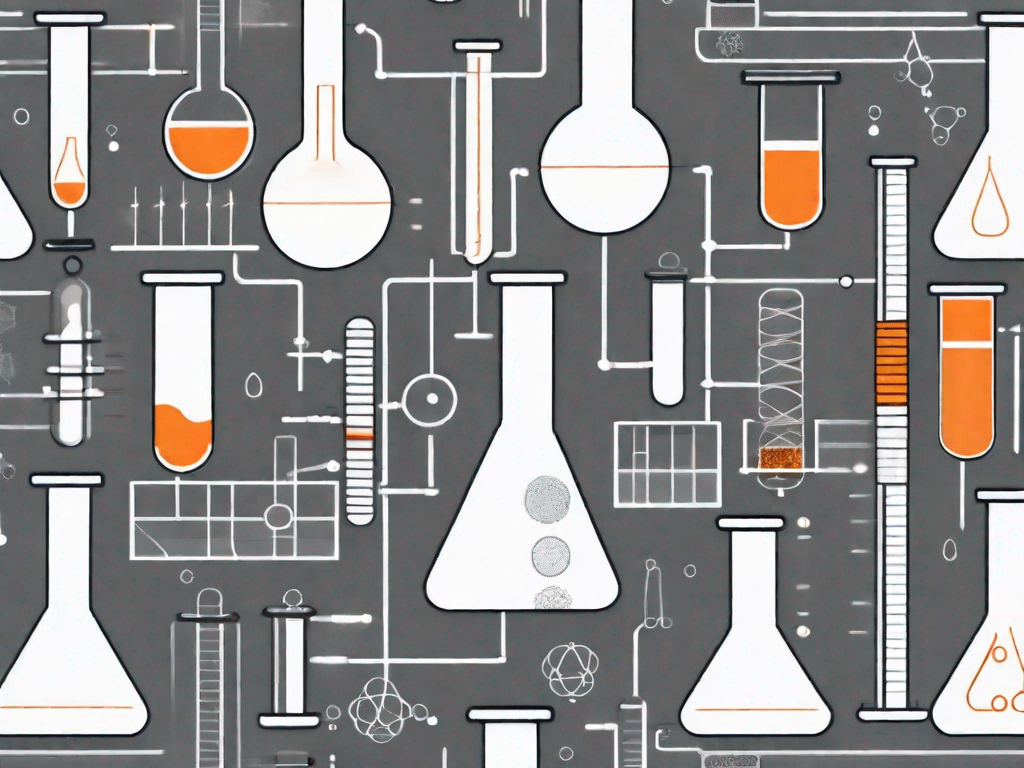.svg)
Creating a Design Strategy Template for Food and Beverage
.svg)

In the competitive world of the food and beverage industry, having a strong design strategy is crucial for success. A well-executed design can create a lasting impression, convey brand values, and ultimately influence consumer behaviour. In this article, we will explore the importance of a design strategy in the food and beverage industry and discuss key elements that contribute to a successful design strategy. Additionally, we will outline the steps involved in creating a design strategy template and highlight some case studies of successful design strategies in the industry.
Understanding the Importance of a Design Strategy in the Food and Beverage Industry
Design plays a pivotal role in food and beverage marketing. It serves as a visual representation of a brand's identity and contributes to brand recognition. A well-thought-out design strategy not only attracts the attention of consumers but also helps build trust and loyalty.
Furthermore, in an industry where competition is fierce, design can be the differentiating factor that sets a brand apart from its competitors. It has the power to evoke emotions, create memorable experiences, and influence purchasing decisions.
In the food and beverage industry, design is not just about creating visually appealing packaging or advertisements. It goes beyond aesthetics and encompasses the entire consumer experience. From the moment a consumer sets eyes on a product to the moment they consume it, design plays a crucial role in shaping their perception and overall satisfaction.
When it comes to packaging design, for example, it is not just about making the product look attractive on the shelf. It is also about ensuring that the packaging is functional, convenient, and informative. Design elements such as clear labeling, easy-to-open packaging, and relevant product information can greatly enhance the consumer's experience and make them more likely to choose a particular brand.
The Role of Design in Food and Beverage Marketing
Design is an integral part of marketing in the food and beverage industry. It creates the visual identity of a brand and communicates its values, positioning, and unique selling points. Through packaging design, advertisements, and marketing materials, design helps build a connection between the brand and the consumer. It creates a visual story that resonates with the target audience and captures their attention.
Take, for example, a coffee brand that prides itself on its commitment to sustainability and fair trade. Through design, the brand can showcase its values by using eco-friendly packaging materials, incorporating images of coffee farmers, and highlighting its ethical sourcing practices. This not only appeals to consumers who prioritize sustainability but also helps differentiate the brand from competitors who may not have such a strong sustainability focus.
Furthermore, design can also play a crucial role in creating a consistent brand experience across different touchpoints. Whether it is the design of a website, social media graphics, or in-store displays, a cohesive and well-executed design strategy helps reinforce the brand's identity and message. This consistency builds trust and familiarity with consumers, making them more likely to choose the brand over others.
How a Strong Design Strategy Influences Consumer Behaviour
A well-developed design strategy can profoundly impact consumer behaviour. It has the ability to create a sense of trust, professionalism, and quality. Consumers are more likely to choose a product with a visually appealing design that aligns with their preferences and values.
Imagine walking into a grocery store and being faced with a wide array of options for a particular product. The packaging design of each brand will play a significant role in your decision-making process. A brand that has invested in a strong design strategy will stand out among the competition, catching your eye and piquing your interest. The design elements, such as color palette, typography, and imagery, will evoke certain emotions and convey a message about the brand's quality and credibility.
Moreover, an effective design strategy can enhance a brand's perception of sustainability and eco-friendliness, tapping into the growing demand for environmentally conscious products. By incorporating sustainable design elements and communicating the brand's dedication to environmental responsibility, a company can attract consumers who prioritize sustainability.
For example, a juice brand that uses recyclable packaging, sources its ingredients from local organic farms, and supports environmental initiatives can leverage design to highlight these attributes. The use of earthy colors, nature-inspired imagery, and eco-friendly symbols can create a strong association between the brand and sustainability in the minds of consumers.
In conclusion, design is an essential component of food and beverage marketing. It goes beyond aesthetics and plays a crucial role in shaping consumer perceptions, building brand recognition, and influencing purchasing decisions. A well-executed design strategy can create a strong connection between a brand and its target audience, driving trust, loyalty, and ultimately, business success.
Key Elements of a Successful Food and Beverage Design Strategy
A successful design strategy for the food and beverage industry comprises various key elements that collectively contribute to its effectiveness. Let's examine the most significant components of a winning design strategy:
Branding and Packaging: The Visual Appeal
A visually appealing and well-designed packaging can pique the interest of potential buyers and entice them to explore the product further. The choice of colours, typography, and imagery should align with the brand's identity and evoke the desired emotional response in consumers.
When it comes to branding and packaging, attention to detail is paramount. From the selection of colours to the placement of logos and images, every element must harmoniously work together to create a cohesive visual representation of the brand. For example, a vibrant and playful colour palette may be suitable for a brand targeting young consumers, while a more sophisticated and elegant design may be more appropriate for a luxury food and beverage product.
Furthermore, packaging design should not only be visually appealing but also functional. It should ensure the product's safety, freshness, and ease of use. Considerations such as ergonomic design, resealable packaging, and portion control can greatly enhance the overall user experience.
Incorporating Sustainability in Design
In today's environmentally conscious society, incorporating sustainability in design has become imperative. A design strategy that emphasizes sustainable materials, eco-friendly packaging, and ethical sourcing resonates strongly with consumers who prioritize sustainability.
When it comes to sustainable design, there are numerous innovative approaches that can be adopted. For instance, using biodegradable or recyclable materials for packaging can significantly reduce the environmental impact. Additionally, incorporating renewable energy sources in manufacturing processes and implementing efficient waste management systems can further contribute to sustainability efforts.
By showcasing the brand's commitment to the environment, it enhances the brand's reputation and attracts environmentally conscious consumers. Consumers are increasingly seeking out brands that align with their values, and by incorporating sustainability in design, food and beverage companies can demonstrate their dedication to a greener future.
The Impact of Colour and Typography in Food and Beverage Design
Colour and typography are powerful tools in design. The choice of colours evokes emotions and can influence consumer perception. Similarly, typography plays a crucial role in conveying the brand's personality and message.
When it comes to food and beverage design, the impact of colour cannot be overstated. Different colours can evoke specific emotions and associations. For example, warm colours like red and orange can stimulate appetite and create a sense of excitement, while cool colours like blue and green can evoke a feeling of freshness and healthiness.
Typography, on the other hand, adds another layer of meaning to the design. The choice of fonts, sizes, and styles can convey different messages and reflect the brand's personality. For instance, a bold and playful font may be suitable for a brand targeting a younger audience, while a more elegant and sophisticated font may be more appropriate for a high-end product.
By understanding the psychology behind colour and typography, designers can create designs that effectively communicate the desired message and resonate with the target audience. It is essential to carefully select colours and typography that align with the brand's identity and evoke the desired emotional response in consumers.
Steps to Create a Design Strategy Template for Food and Beverage
Creating a well-defined design strategy template is essential for consistency and efficiency. By following a structured approach, brand owners and designers can ensure that their design strategy aligns with the brand vision. Let's look at the key steps involved:
Identifying Your Target Audience
The first step in creating a design strategy template is to identify the target audience. Understanding the demographics, preferences, and motivations of the target market helps designers create designs that resonate with consumers and meet their needs and expectations.
Defining Your Brand Identity
Before diving into the design process, it's crucial to define the brand identity. This involves clearly articulating the brand's mission, vision, values, and personality. The design strategy should align with and reinforce the brand identity, ensuring consistency across all touchpoints.
Selecting Appropriate Design Elements
The selection of design elements depends on the brand's positioning, target audience, and product offerings. This includes choosing colours, typography, imagery, and packaging materials that effectively communicate the brand's message and appeal to the target audience.
Testing and Refining Your Design Strategy
Once the design strategy template is developed, it's essential to test its effectiveness. Gathering feedback from the target audience, conducting focus groups, and analyzing consumer responses can provide valuable insights for refining the design strategy. Continuous evaluation and refinement ensure that the strategy remains relevant and resonates with consumers over time.
Case Studies: Successful Design Strategies in the Food and Beverage Industry
Examining successful design strategies in the food and beverage industry can offer invaluable insights and inspiration. Let's explore two compelling case studies:
Case Study 1: How a Major Beverage Brand Revamped Its Design Strategy
A well-known beverage brand recently underwent a redesign to better connect with its target audience. By refreshing its packaging design, leveraging bold colours, and incorporating modern typography, the brand successfully modernized its image while preserving its heritage. The redesign resulted in increased consumer engagement and market share.
Case Study 2: A Small Food Brand's Innovative Design Approach
A small food brand embraced innovation by incorporating interactive packaging design elements. By utilizing augmented reality, they created an immersive and engaging experience for consumers. The innovative design strategy enabled the brand to differentiate itself from competitors and garnered significant attention in the market.
In conclusion, a well-crafted design strategy is a powerful tool for brands in the food and beverage industry. It not only creates visual appeal but also influences consumer behaviour and builds brand loyalty. By understanding the importance of design, incorporating key elements, and following a structured approach, brands can create a design strategy template that drives success. Through case studies, we have seen how impactful design strategies can propel brands to greater heights in the industry. Embracing the power of design is a strategic move that can yield significant benefits in the highly competitive food and beverage market.
Related Posts
Let's
Let’s discuss how we can bring reinvigorated value and purpose to your brand.







.svg)